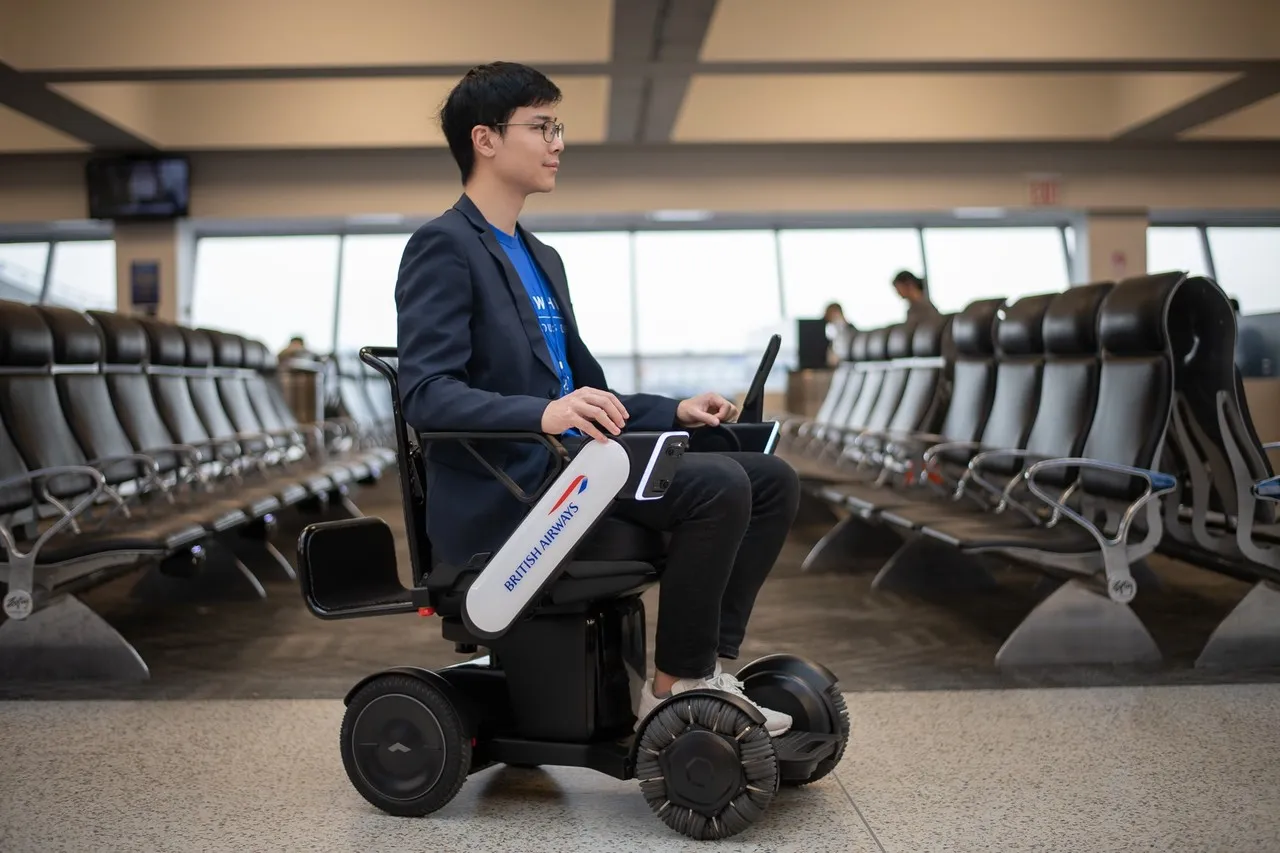
British Airways claims US first with autonomous wheelchairs
Mar 01, 2020

British Airways has announced the introduction of autonomous wheelchairs for passengers with reduced mobility, marking a significant innovation in the travel industry. These self-driving wheelchairs are designed to navigate through busy airport terminals, allowing users to travel independently and comfortably. The initiative aims to enhance the travel experience for those who may face challenges in mobility, providing greater freedom and convenience. By implementing this technology, British Airways is positioning itself as a leader in accessibility, showcasing its commitment to improving services for all passengers. This advancement reflects the airline's ongoing efforts to create a more inclusive environment for travelers.
British Airways has made a significant leap in enhancing travel accessibility by introducing autonomous wheelchairs, marking a first in the United States. These innovative wheelchairs are designed to provide a seamless travel experience for passengers with reduced mobility, utilizing advanced technology to navigate through airports independently. This development not only reflects British Airways' commitment to inclusivity but also positions the airline as a pioneer in utilizing autonomous technology within the aviation sector.
What Are Autonomous Wheelchairs?
Autonomous wheelchairs are equipped with sophisticated sensors and navigation systems that allow them to operate without human intervention. These wheelchairs can detect obstacles, map their surroundings, and transport passengers to their desired locations within the airport. This technology is particularly beneficial in busy airport environments, where traditional wheelchair assistance may not be sufficient.
Key Features of British Airways’ Autonomous Wheelchairs
The autonomous wheelchairs introduced by British Airways come with several key features designed to enhance user experience:
- Self-Navigation: The wheelchairs can autonomously navigate through terminals, reducing wait times for passengers.
- Obstacle Detection: Advanced sensors allow the wheelchairs to detect and avoid obstacles, ensuring a safe travel experience.
- User-Friendly Interface: Passengers can easily input their destination using a simple touchscreen interface.
- Real-Time Monitoring: Staff can track the location and status of each wheelchair, providing assistance when necessary.
The Impact on Passengers with Reduced Mobility
This initiative significantly enhances the travel experience for passengers with reduced mobility. By allowing individuals to navigate the airport independently, British Airways is not only improving accessibility but also empowering passengers to take control of their travel experience. The autonomous wheelchairs aim to eliminate the stigma often associated with needing assistance and foster a more inclusive environment.
How It Works
The technology behind the autonomous wheelchairs involves a combination of robotics, artificial intelligence, and machine learning. Here’s a breakdown of how it works:
| Technology | Description |
|---|---|
| Robotics | Mechanisms that allow the wheelchair to move and navigate autonomously. |
| Artificial Intelligence | Enables the wheelchair to learn from its environment and improve navigation over time. |
| Machine Learning | Allows the system to adapt to various airport layouts and passenger preferences. |
British Airways' Commitment to Accessibility
British Airways has long been committed to making air travel accessible for all. The introduction of autonomous wheelchairs is a testament to this commitment. The airline has also launched various initiatives aimed at improving accessibility, such as:
- Enhanced Training: Staff are trained to assist passengers with diverse needs.
- Partnerships: Collaborating with organizations that advocate for disability rights to ensure services meet the needs of all passengers.
- Feedback Mechanisms: Establishing channels for passengers to provide feedback on their experiences, helping to continually improve service.
Future of Autonomous Technology in Aviation
The introduction of autonomous wheelchairs could pave the way for further innovations in the aviation industry. As technology continues to evolve, we may see more autonomous solutions for various aspects of air travel, including baggage handling, check-in processes, and even automated boarding systems.
Potential Challenges and Considerations
While the implementation of autonomous wheelchairs is an exciting advancement, there are several challenges that British Airways and other airlines must consider:
| Challenges | Considerations |
|---|---|
| Technical Issues | Ensuring reliability and safety of the technology in real-world environments. |
| Staff Training | Properly training staff to assist and integrate the technology into existing services. |
| Passenger Acceptance | Encouraging passengers to embrace new technology and understand its benefits. |
Conclusion
British Airways' introduction of autonomous wheelchairs is a groundbreaking step in making air travel more accessible for passengers with reduced mobility. This initiative not only enhances the travel experience but also sets a precedent for future developments in the aviation industry. As technology continues to advance, it is essential for airlines to prioritize inclusivity and ensure that all passengers can travel with dignity and independence.
Related Articles

Explore Thailand: The Best Islands to Visit for Paradise, Adventure, and Relaxation

The Ultimate Guide to the Best Islands in Thailand for Your Next Getaway

Do babies need passports? How to get a passport for a newborn

How to get a U.S. passport fast: here’s how to expedite the process

What is Mobile Passport Control: 5 reasons why you should use it

SENTRI vs. Global Entry: A detailed guide

Do you need a passport to go to the Bahamas? Let’s find out

Do you need a passport to go to Mexico? A detailed guide

Do you need a passport to go to Canada? We got the answer

Do You Need a Passport for a Cruise: An Essential Travel Guide

Booster Seat Requirements: All the Rules to Follow in Your Rental Car

What Are the World’s Most Powerful Passports, and How Does Yours Rank?

How to Take a Passport Photo at Home: A Helpful Guide

You've got to have heart! Southwest's new livery

Your opinion: Should water be free on low cost carriers?

Young women bolder than guys as solo travellers
